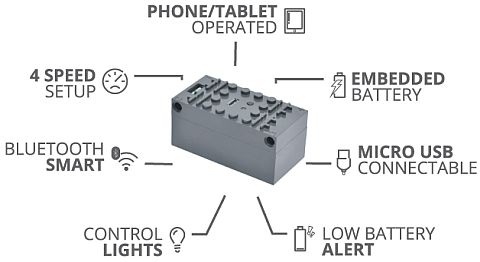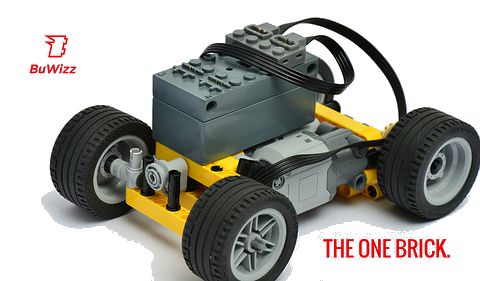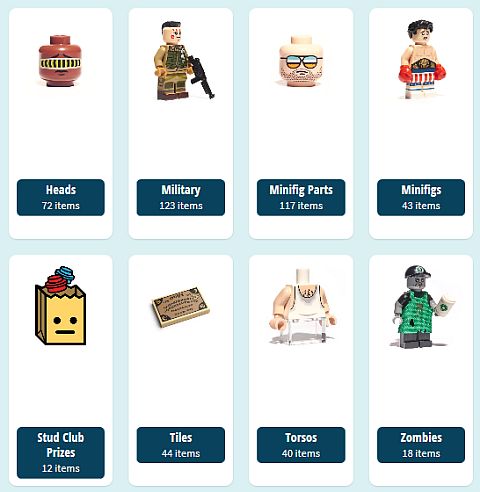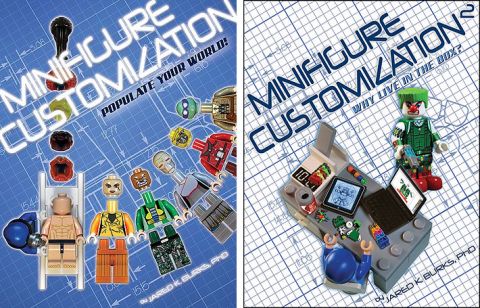Back in December of last year, I was contacted by Jim from BuWizz.com, and he shared a video about their awesome LEGO brick contraption called the Beer Bot with extension crane, mechanical claw, and bottle opener (see video below). The robot is operated by the LEGO-compatible BuWizz brick, which is a compact, high-performance remote control system for LEGO trains and LEGO Technic models with an embedded battery, precise servo control, and huge power.

It was fun to watch Beer Bot in action, but since my correspondence with Jim was right before Christmas, I didn’t have the time and the space to fit it in our busy holiday publishing schedule. Since then, Jim shared with me another BuWizz-powered machine, capable of pulling a car, and in a later attempt, an entire 7-ton (15,000+ lbs) railroad car filled with passengers. In the player below, I have included the Beer Bot, the Train Puller, as well as some behind-the-scenes footage.
Really awesome, isn’t it? Back in 2016, Buwizz ran a Kickstarter campaign, and since then they have been steadily improving and refining their product. BuWizz 2.0 was just recently released, and you can already get it at their website with free worldwide shipping. Here are some facts and figures from the BuWizz.com website:
- BuWizz will supercharge your LEGO Power Functions motors and propel your LEGO models to speeds of over 40 km/h in ludicrous mode. BuWizz has 4-speed modes: slow, normal, fast, and ludicrous.
- BuWizz offers 3x more power per each of the 4 output channels, a total of 12x more power than other solutions on the market.
- The servo motor has 15 positions with BuWizz, not just left-centre-right as with PF IR controls.
- BuWizz brick has four ports and comes with accompanying iOS and Android apps.
- Built-in battery and power converter enables BuWizz to offer tremendous power (up to 12x more than other solutions). This means that you can move very heavy models and climb slopes with ease.
- BuWizz Bluetooth technology offers responsive controls for your LEGO creations with a range of 60 m. (Bluetooth range, as any radio technology, is dependent on environment and phones differ significantly in this regard. The measured range is up to 100 m in clear, open space, but the Buwizz team claims only 60 m.)
- While BuWizz is only 3/4 the size of the #8878 LEGO Power Functions Li-Po Battery Box, it also replaces two IR receivers (or other control solutions). This gives you more flexibility when building smaller and faster models.
- BuWizz brick is high-quality electronics and Li-Po battery, enclosed in precision-made plastic shell, assembled by professional engineers in Slovenia (EU). BuWizz is made to last and has a 20-year warranty as well as 24-hours support.
- BuWizz brick connects to your phone through the BuWizz mobile App. Special care was put into making BuWizz usage as easy as possible. You can start playing with BuWizz in under 1 minute.
- Because of its small size, BuWizz can fit into any LEGO train and offers you more flexibility in train design. You can control the new train motors, and with slow mode, you can also safely control and drive the old 4.5 V train motors, without fear of damaging them. And with ludicrous mode, you can drive the old 12 V train motors.
- The BuWizz power bank offers an opportunity to extended your playtime from a couple of hours to several hours (even tens of hours – depends on power bank capacity).

Based on the videos, BuWizz certainly looks impressive. I personally haven’t had the chance to try it, but if you are interested to check it out, you can find more information at BuWizz.com, there are also several tutorials and demonstration videos at the BuWizz YouTube channel, reviews and comparison test by other LEGO fans on YouTube, and I also found an extensive discussion on BuWizz at the Eurobricks Forum.

What do you think? How do you like the idea of BuWizz? Is this something you would consider trying? Or, have you already had the chance to try it? Feel free to share your thoughts and own reviews in the comment section below!
And you might also like to check out the following related posts:
























